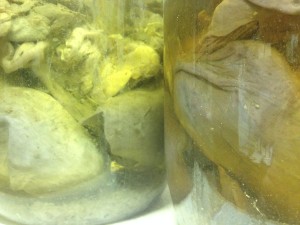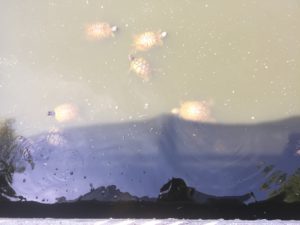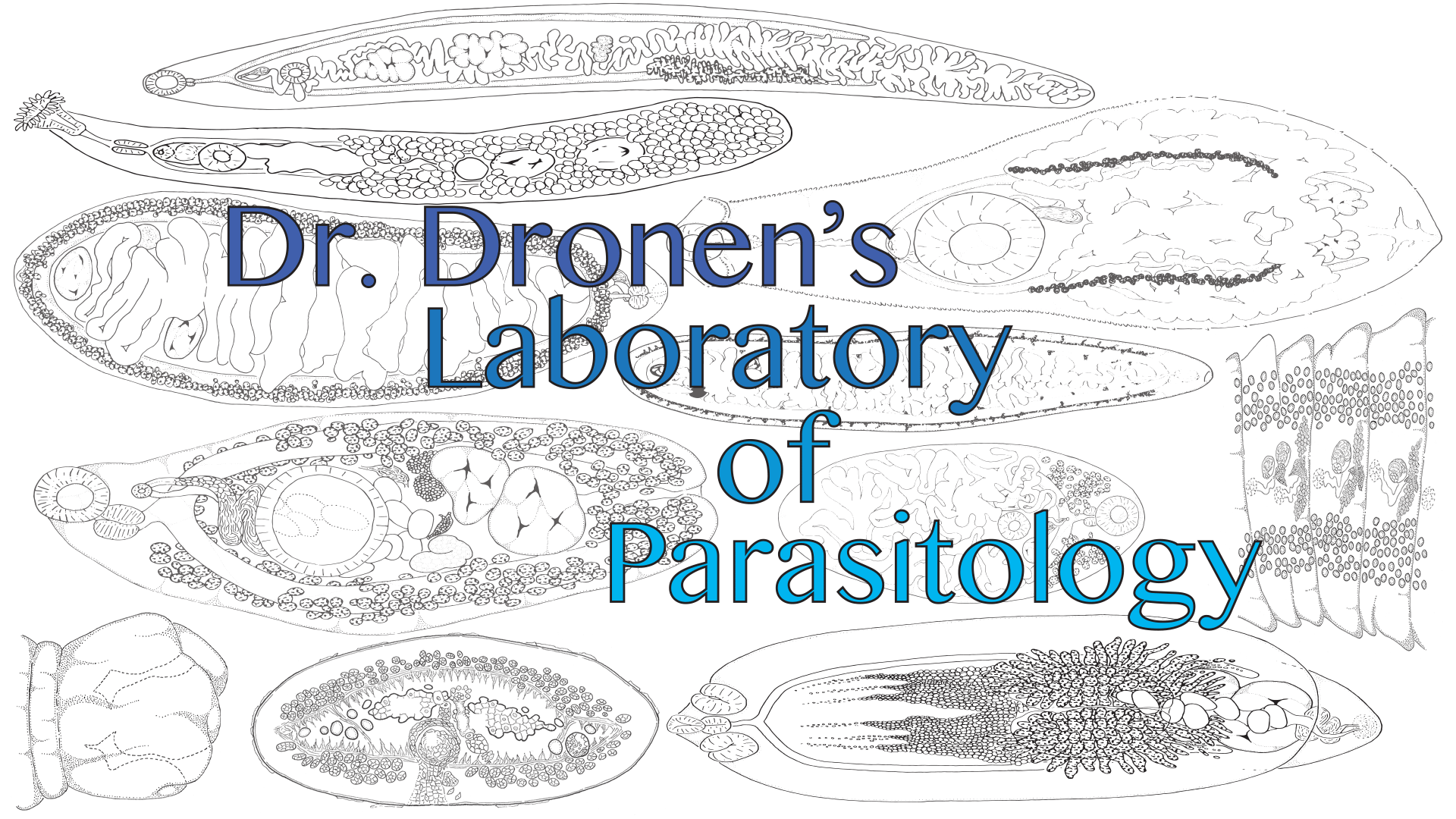Confiscated Freshwater Turtles
Selected publications and abstracts from this project:
- Murray, R. A., N. O. Dronen, and C. K. Blend. 2004. Endohelminths from five rare species of turtles (Batagutidae) from southeast Asia confiscated by international authorities in Hong Kong, China. Zootaxa 786: 1–12.
- Murray, R. A., N. O. Dronen, and C. K. Blend. 2004. Endohelminths from the black marsh turtle, Siebenrockiella crassicollis, consfiscated by international authorities in Hong Kong, China. Comparative Parasitology 71: 255–257.
For more publications, please visit the publications tab.
Gulf of Mexico Sea Turtles
 Five species of sea turtle inhabit the dynamic Gulf of Mexico ecosystem. We’ve acquired parasites from multiple species collected opportunistically from stranded animals by the NOAA Southeast Fisheries Sciences Center–Galveston Laboratory in Galveston, Texas. This is one of the first investigations of sea turtle gastrointestinal parasites in Texas waters, and the project is currently ongoing. IF YOU EVER FIND OR ACCIDENTALLY CAPTURE A SEA TURTLE IN TEXAS, PLEASE CALL 1-800-TURTLE-5 OR 1-800-887-8535 TO REPORT IT TO THE APPROPRIATE AUTHORITIES!
Five species of sea turtle inhabit the dynamic Gulf of Mexico ecosystem. We’ve acquired parasites from multiple species collected opportunistically from stranded animals by the NOAA Southeast Fisheries Sciences Center–Galveston Laboratory in Galveston, Texas. This is one of the first investigations of sea turtle gastrointestinal parasites in Texas waters, and the project is currently ongoing. IF YOU EVER FIND OR ACCIDENTALLY CAPTURE A SEA TURTLE IN TEXAS, PLEASE CALL 1-800-TURTLE-5 OR 1-800-887-8535 TO REPORT IT TO THE APPROPRIATE AUTHORITIES!
Selected publications and abstracts from this project:
- Cammarata, C. A., and N. O. Dronen. 2015. New worms to marine turtles: Two species of Telorchis Luehe, 1899 (Digenea: Telorchiidae) found in an atypical host and environment. Presented at the International Herpetological Symposium, San Antonio, Texas, May 2015.
For more publications, please visit the publications tab.
Texas Aquatic Snakes

Selected publications and abstracts from this project:
- Hassoun, R. J., and N. O. Dronen. 1979. Multiple-discriminant analysis of two populations of Ochetosoma elongatum (Pratt 1903) Goodman 1952, from eastern hognose snakes. Presented at the Southwestern Association of Parasitologists Annual Meeting, Lake Texoma, Oklahoma, April 1979.
- Guidry, E. V., and N. O. Dronen. 1977. Taxonomic evaluation of the Ochetosoma aniarum complex (Digenea, Ochetosomatidae) from water snakes (Natrix) of Southeast Texas. Presented at the Southwestern Association of Parasitologists Annual Meeting, Lake Texoma, Oklahoma, April 1977.
- Dronen, N. O. 1977. Unusual morphological variation in an ochetosome population (Digenea: Ochetosomatidae) from a hognose snake in Texas. Presented at the Southwestern Association of Parasitologists Annual Meeting, Lake Texoma, Oklahoma, April 1977.
For more publications, please visit the publications tab.
Texas Freshwater Turtles

Previous research in my lab focused on describing new species of parasites from various common freshwater turtles in Texas many years ago, however a few new graduate students in the laboratory of parasitology will be revitalizing our association with freshwater turtles in the coming years! They are hoping to understand the distribution, community structure and ecology of endohelminths and their turtle hosts by doing a state-wide survey of three common species. In addition, we have some exciting new tools we are hoping to develop for future work understanding the community structure of parasites from any species of turtle using samples collected from collaborators and from our own field work. Feel free to follow the students’ progress on Instagram and Twitter using the hashtag #TeamTurtleParasites.
Selected publications and abstracts from this project:
- DiNuzzo, A. R., and N. O. Dronen. 1980. The ecology of spirorchiid blood flukes in the red-ear turtle (Chrysemys scripta elegans Wied) from Brazos County, Texas. Presented at the Southwestern Association of Parasitologists Annual Meeting, Lake Texoma, Oklahoma, April 1980.
- DiNuzzo, A. R., and N. O. Dronen. 1979. Preliminary studies on the ecology of the endohelminths of freshwater turtles from South-central Texas. Presented at the Southwestern Association of Parasitologists Annual Meeting, Lake Texoma, Oklahoma, April 1979.
- Dronen, N. O., and H. T. Underwood. 1977. The life cycle of Cephalogonimus vesicaudus (Digenea: Cephalogonimidae) from Trionyx spiniferus from Texas. Proceedings of the Helminthological Society of Washington 44: 198–200.
